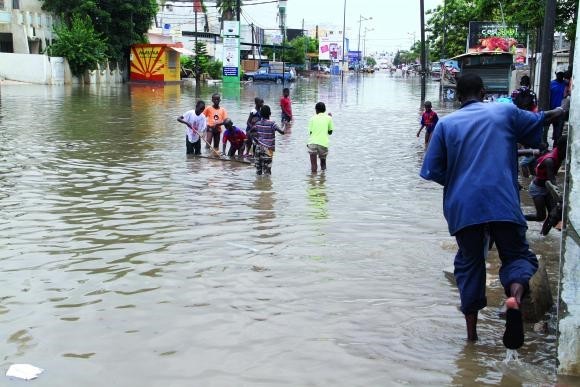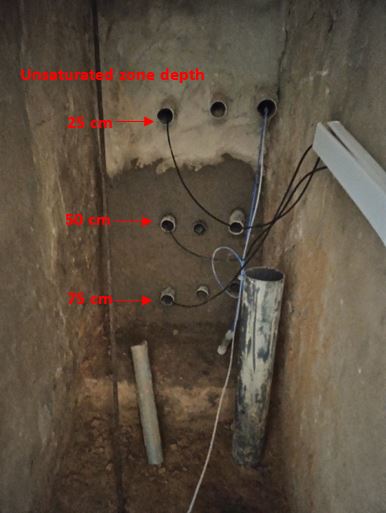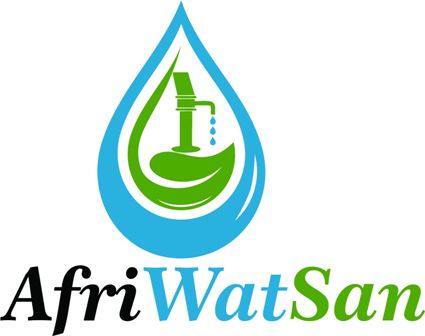In August and September of 2020, extreme rainfall events caused flooding in Dakar.

Flooding in Keur Massar (peri-urban area)
A new monitoring facility in the AfriWatSan urban groundwater observatory in the Keur Massar in Dakar (Senegal) yields new insight into the hydrological impacts of such events. Located beside a large septic tank beneath a school toilet block, the facility provides high-frequency observations of rainfall and changes in the quantity and quality of soil moisture flowing through the unsaturated zone to shallow groundwater in Quaternary sands.

Presentation of the study area and location of the research observatory
During a wetter (535 mm) than normal (450 to 500 mm) rainy season in 2020, two extreme rainfall events were observed on 27th of August (69 mm) and 5th of September (64 mm) when rainfall intensities reached 43 and 20 mm per hour, respectively. Within 3 hours of rain falling, sharp increases in soil moisture (soil saturation at 30 to 40%) were observed at depths of 25 and 50 cm with a slightly lagged response of 4 hours at a depth of 75 cm. Sampled soil waters associated with the extreme event of August 27th show a dramatic rise in nitrate concentrations that doubles at a depth of 25 cm but rises more than six-fold at depths of 50 and 75 cm.

Monitoring device

High frequency monitoring
The sharp rise in nitrate demonstrates well the connection between heavy rain events and transport of faecal contaminants from the septic tank in the unsaturated zone. This process has long been suspected from previous research in the Thiaroye area of Dakar but the processes and rates have not previously been directly observed.
